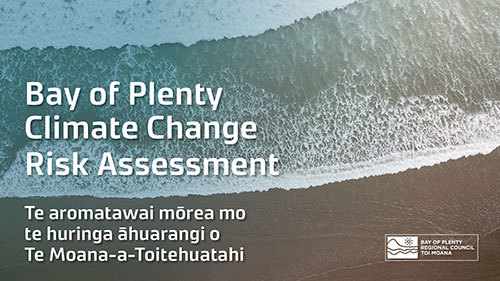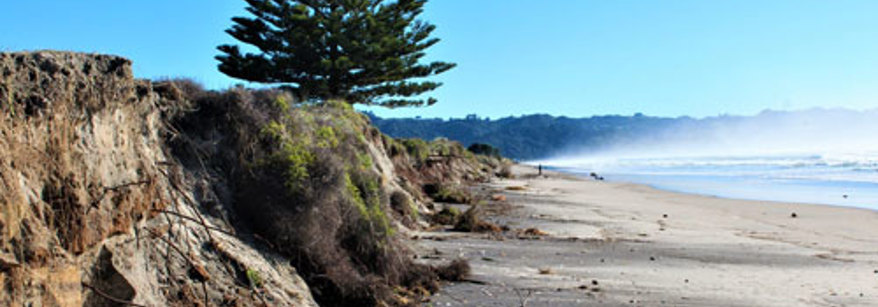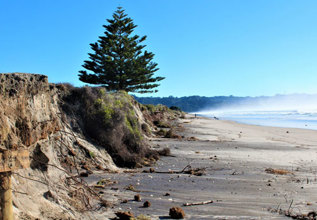To understand the risks we face as a region, based on the climate changes we know are coming, we contracted Tonkin & Taylor to carry out a climate change risk assessment for the Bay of Plenty.
The assessment takes a comprehensive look at climate risk across all aspects of our environment, our people, and our economy and sets a baseline for us all to collectively build upon and respond to climate change risks. It is important to note that it is not detailed at the local level.
You can read the assessment by selecting the volumes and supporting appendices, as follows:
- Volume 1: Overview and Regional Summary
- Volume 2: District Summaries
- Volume 3: Sector Summaries
- Appendix A: Methodology
- Appendix B: Detailed risk assessment workbook
- Appendix C: Perspectives on climate change risks to Māori in the Bay of Plenty and Waiōhau Marae case study
The risk assessment process
We started by identifying and screening potential risks (Phase 1) before carrying out a more detailed assessment (Phase 2). We did not assess risks at a local scale or consider emissions reductions.
Phase 1 focused on identifying a long list of potential climate change risks to the region. Information was gathered through a survey of stakeholders and tangata whenua, and a series of online and in-person workshop and hui which took place in November 2021. This Phase was completed in February 2022, with the outputs forming the basis of Phase 2.
Phase 2 ran from March-September 2022 and involved a detailed technical risk assessment of the long list of risks, alongside further exploration of Māori perspectives of climate change risks in the Bay of Plenty through two case studies. The detailed technical analysis is captured in the Appendix B spreadsheet (link above) and is the basis for the three summary volumes which present the information from a regional, district and sectoral perspective.
How will the risk assessment be used?
As the first climate change risk assessment for the region, it provides a valuable resource, setting a baseline to collectively build upon and respond to climate change risks. Alongside our partners, this information will help us identify where each of us need to focus our actions and ensure we make well informed decisions into the future.
Key uses of the risk assessment could be:
- Sector based adaptation planning: information in the risk assessment supports sectors to plan at more detail, the next level down from the regional outputs.
- Detailed local assessments: the regional assessment provides a basis for detailed local assessments and then planning at a city/district scale.
- Strategic planning: the information will be an important input for consideration in regional and sub-regional strategic planning.
Going forward, it is important that we continue to work with our partners, sharing expertise and knowledge and ensuring a coherent response to climate risks for the Bay of Plenty.



